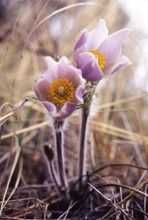 Loading... Please wait...
Loading... Please wait...- Home
- SEEDS
- SEED MIXES
- BUY PLANTS
- Info Request
-
Educational Videos
- Greenhouse Transplanting Demonstration
- Native Seed Cleaning demonstration at Ion Exchange Native Seed and Plant Nursery
- Attracting Butterflies
- Bidens - Bidens cernua Harvest Video
- Big Blue Stem Harvest
- Butterfly Milkweed Video
- Button Blazingstar - Liatris aspera Video
- Buttonbush - Cephalanthus occidentalis Video
- Canada Anemone - Anemone canadensis Harvest Video
- Cardinal Flower - Lobelia cardinalis Video
- Control Burn - Wildflower Field
- Cream Gentian - Gentiana flavida
- Culver's Root - Veronicastrum virginicum Video
- Cup Plant - Silphium perfoliatum Video
- Dormant Seeding | Planting
- Earthyman's Favorite Wildflowers Video
- Eco-Friendly Golf Course Seed Mix
- Floating Islands
- Fringed Loosestrife - Lysimachia ciliata Video
- Giant Yellow Hyssop - Agastache nepetoides Video
- Indiangrass - Sorghastrum nutans Video
- Iowa Prairie Partner Program
- Leadplant - Amorpha canescens (Potted) Video
- Meadow Blazingstar - Liatris ligulistylis
- Midland Shooting Stars - Dodecatheon meadii Video
- Native Plant Nursery Field Irrigation Experiment
- Nodding Onion - Allium cernuum Video
- Ohio spiderwort - Tradescantia ohiensis Video
- Old Man's Beard - Clematis virginiana blooms Video
- Oxeye Sunflower - Heliopsis helianthoides Video
- Prairie Spiderwort - Tradescantia bracteata
- Purple Coneflower - Echinacea purpurea Video
- Rain Garden or Water Garden Video
- Rattlesnake Master - Eryngium yuccifolium Video
- Riverbank Stabilization - Wetland Plants
- Rose Mallow - Hibiscus militaris Video
- Rosinweed - Silphium integrifolium Video
- Royal Catchfly - Silene regia
- Showy Tick Trefoil - Desmodium canadense Video
- Sneezeweed - Helenium autumnale Video
- Swamp Betony - Pedicularis lanceolata Video
- Swamp Milkweed - Asclepias incarnata Video
- Sweet Blackeyed Susan - Rudbeckia subtomentosa Video
- Tall Coreopsis - Coreopsis tripteris Video
- Urban Butterfly Garden
- Wild Bergamot - Monarda fistulosa Video
- Wild Geranium - Geranium maculatum Harvest
- Wild Goldenglow - Rudbeckia lanciniata Video
- Wild Petunia - Ruellia humilis Harvest Video
- Woodland Knotweed - Polygonum virginianum Video
- Yellow Coneflower - Ratibida pinnata Video
- Blog
- Resources
- Policies
Contact Us
Phone:
563-419-0837
or 563-535-7231
Email:
hbright@ionXchange.com
Browse Products
Add to Wish List
You Recently Viewed...
Our Newsletter
Product Description
Pasque Flower (Anemone patens) - Found in all prairie regions from the Arctic Circle to the Southern United States. It is the earliest of all prairie flowers blooming in March and April. Grows from 2 inches to 16 inches and sports a single blue, purple or white flower on a long, thin stem. Pasque flowers do not have true petals; instead it is the sepals that give the flower color.
Ranunculaceae Family - From the Greek term anemone, meaning "wind" which probably refers to seed distribution or perhaps because the delicate stems and leaves sometimes appear to tremble in the wind and patens, meaning "spreading".
| Sun Exposure | Savanna, Prairie |
| Soil Moisture | Dry Mesic, Dry |
| Bloom Time | Spring, Summer April, May, June |
| Bloom Color | Purple, blue, lavender, white |
| Max. Height | 2-16 inches |
| Wetland Code | UPL |
| Germ Code | C(60) |
| Seeds Per Packet | 100 |
| Seeds Per Ounce | 18,000 |
Medicinal Uses:
Pasque Flower was one of the native prairie species that was included on the official United States pharmacopoeia catalog from 1882 to 1918 because of its diuretic, expectorant and menstrual-inducing qualities. Native Americans used this species for treating the pain of rheumatism and other painful conditions. It was used as a diaphoretic, a diuretic and as a salve or wash to treat boils, burns and sore eyes. Healing of wounds was often accelerated using the entire plant, dried and ground, applied to the wound. Great caution was used when using this species as a medicine because it contains alkaloids that can cause depression, nervousness and intestinal distress
WARNING:
It should be noted that Pasque flower is poisonous. It is extremely irritating both internally and externally and use of this plant should be avoided.












